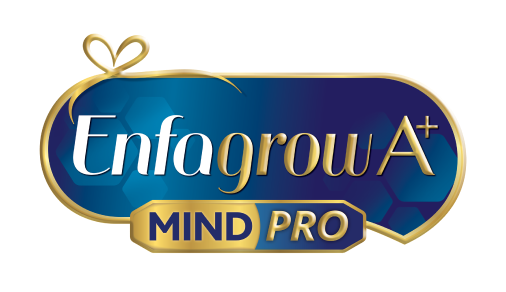With pre-schools in Malaysia being allowed to reopen this month1 following the improving COVID-19 statistics, it’s important to ensure proper child hygiene is observed. This will take a combined effort between parents and teachers to ensure that the school environment is safe for children. They also need to make sure that children understand the importance of practicing good hygiene, among other COVID-19-related guidelines.
Getting the nutrients your child needs plays a major role in their immunity development.
For kids in pre-school: Check the pre-school guidelines and practices
The pre-school staff will be more hands-on with maintaining child hygiene. Hence, it’s important to know the guidelines and practices of the centre or school.
The World Health Organization (WHO) suggests some basic principles to keep students and staff safe in school, including:2
-
If a student or staff member is sick, they should not come to school
-
Regular hand washing with soap and water or alcohol rub should be enforced
-
Schools should promote social distancing
-
Regular disinfection of school buildings, classrooms, and water and sanitation facilities must be practiced
Teachers and staff are encouraged to promote and demonstrate good hygiene behavior themselves.
Schools should be up to date on the latest developments about the pandemic, and how to ensure the safety of their students. They are encouraged to update their emergency and contingency plans. Community events and meetings that will take place in school grounds are also discouraged.
For kids in pre-school: Wearing masks
While older children may be taught to wear masks, children aged 1 to 2 should not wear masks.3 In case children are afraid of wearing masks, parents are advised to engage with them to make it less intimidating or scary, for instance by putting on a mask on a stuffed toy or drawing a mask on a favorite fictional character, or by allowing the child to practice how to wear a mask first.7
In school, your pre-school staff and teachers should also be wearing protective equipment such as masks. Schools are also encouraged to have face coverings readily available for students and staff who do not have them.3
Before returning your children to pre-school, you must validate their intensified cleanliness and disinfection efforts. Since your younger children can’t wear masks yet, their environment has to be kept as sterile as possible.
For pre-school kids: Talk to kids about how to maintain child hygiene
The importance of child hygiene must be taught by both parents and teachers to children in pre-school. One of the most effective ways to teach children proper hygiene is to talk to them.
Remember to communicate with your child. It is encouraged to reassure children of their safety.4 Be open to any questions or reactions your children might have about the disease. It is also likely that the child is seeing a lot of news and stories about COVID-19 on TV or online, making it important to clarify what is true and untrue regarding the nature and spread of COVID-19.5
The Centers for Disease Control and Prevention (CDC) suggests talking to your children about what COVID-19 is, and what kind of safety measures to follow, including hand-washing and keeping their distance from people who are sneezing, coughing, or are sick.5
Include child hygiene in your kids’ daily routine at home
Ensuring safety for your child begins at home. Integrating hygiene as part of a child’s daily routine makes it easier for them to practice proper hygiene outside even without your supervision.6 Their pre-school years are the best time to begin because you are close enough to teach them and make sure they learn the proper way of doing things.
Some of the things you can start teaching them are:
-
Washing their hands thoroughly before eating
-
Washing their hands thoroughly after playing or after touching animals
-
The proper way to shower (you should be within arm’s reach at all times to supervise)
-
Covering their mouth when they sneeze or cough by using their sleeves or the inner corners of their elbows to cover their mouth
With constant practice and habit formation at home, it will be easier for your children to care for themselves. They will also be able to follow the teachers easily when they go back to pre-school.
References:
- “Coronavirus: Malaysia’s pre-schools, kindergartens allowed to reopen from July ”StraitsTimes.com. Accessed 08 July 2020.
https://www.straitstimes.com/asia/se-asia/coronavirus-malaysias-pre-schools-kindergartens-allowed-to-re-open-from-july-1 - “Key Messages and Actions for COVID-19 Prevention and Control in Schools”. WHO. Accessed 29 July 2020.
https://www.who.int/docs/default-source/coronaviruse/key-messages-and-actions-for-covid-19-prevention-and-control-in-schools-march-2020.pdf?sfvrsn=baf81d52_4 - “Guidance for K-12 School Administrators on the Use of Cloth Face Coverings in Schools.” CDC. Accessed 29 July 2020.
https://www.cdc.gov/coronavirus/2019-ncov/prevent-getting-sick/about-face-coverings.html - “How to talk to your kids about COVID-19”. Mayo Clinic. Accessed 29 July 2020.
https://www.mayoclinic.org/diseases-conditions/coronavirus/in-depth/kids-covid-19/art-20482508 - “Talking with children about Coronavirus Disease 2019.” CDC. Accessed 29 July 2020.
https://blogs.cdc.gov/publichealthmatters/2020/05/talk-to-kids/ - “Personal hygiene for toddlers and preschoolers.” Victoria State Government | Education & Training. Accessed 09 July 2020.
https://www.education.vic.gov.au/parents/health/Pages/personal-hygiene.aspx - “Cloth Face Coverings for Children During COVID-19”. Healthy Children.org. Accessed 30 July 2020.
https://www.healthychildren.org/English/health-issues/conditions/COVID-19/Pages/Cloth-Face-Coverings-for-Children-During-COVID-19.aspx


